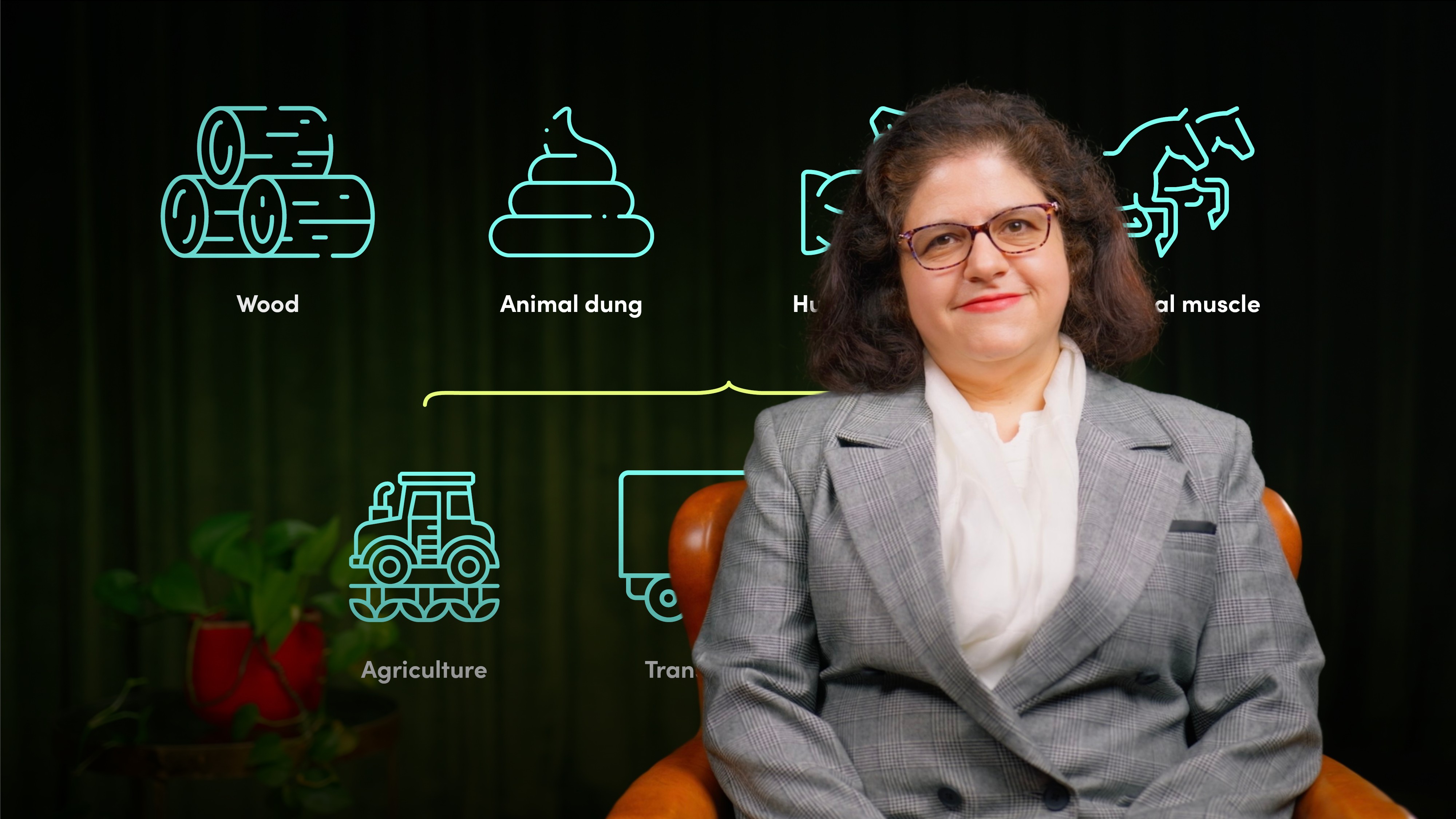
Decarbonising the Energy Mix

Olivia Oddi
The way we produce and consume energy is changing fast, but not quickly enough. Olivia Oddi explores the urgent need for decarbonisation, the role of electrification, and what our future energy mix could look like.
The way we produce and consume energy is changing fast, but not quickly enough. Olivia Oddi explores the urgent need for decarbonisation, the role of electrification, and what our future energy mix could look like.

Decarbonising the Energy Mix
13 mins 12 secs
Key learning objectives:
Define the energy mix
Understand why decarbonisation is a challenge in the energy mix
Outline the 6 policy components to push electrification
Identify the future of the energy mix
Overview:
The energy mix refers to the combination of different energy sources used to meet human energy needs. Today, the energy mix is at a pivotal moment as the world recognises the environmental impact of fossil fuels and seeks to integrate more renewable energy sources to achieve sustainability. Decarbonisation is one of the greatest challenges facing the energy sector. Electrification is a key strategy for reducing carbon emissions. It involves replacing fossil fuel-based technologies with electric alternatives. These technologies are more efficient, reducing overall energy demand and lowering emissions. However, t must be supported by electricity generation from low-carbon sources like renewables and nuclear energy.
Summary
What is the energy mix?
The energy mix refers to the combination of different energy sources used to meet human energy needs. Hundreds of years ago biomass such as wood and animal dung dominated. The Industrial Revolution transformed the energy mix with the introduction of fossil fuels due to their abundance, accessibility, and affordability. Today, the energy mix is at a pivotal moment as the world recognises the environmental impact of fossil fuels and seeks to integrate more renewable energy sources to achieve sustainability.
Why is decarbonisation a challenge in the energy mix?
Decarbonisation is one of the greatest challenges facing the energy sector. Currently, fossil fuels account for the vast majority of greenhouse gas emissions. The transition away from fossil fuels is slow, as energy demand continues to rise alongside population growth. The use of fossil fuels remains high despite the increasing adoption of renewables, making it clear that the current pace of transition is not fast enough to mitigate climate change effectively.
How can electrification help address decarbonisation?
Electrification is a key strategy for reducing carbon emissions. It involves replacing fossil fuel-based technologies with electric alternatives, such as electric vehicles (EVs) and heat pumps. These technologies are more efficient, reducing overall energy demand and lowering emissions. It must be supported by electricity generation from low-carbon sources like renewables and nuclear energy. Expanding and modernising power grids will be essential to accommodate the rising demand for electricity and ensure a stable, low-carbon energy supply.
What are the six policy components needed to push electrification forward?
The International Energy Agency (IEA) has identified six key policy components to accelerate electrification:
- Expansion of grid capacity
- Development of renewable energy sources
- Enhancement of power transmission networks
- Subsidies for electrification in heavy industry
- Electric vehicle (EV) charging infrastructure
- Awareness and education campaigns
What does the future of the energy mix look like?
According to the IEA, achieving net-zero emissions by 2050 requires a drastic shift in the energy mix. Key milestones include:
- By 2025: Nearly 50% of electricity should come from low-carbon sources, and no new fossil fuel boilers should be sold
- By 2030: 60% of global car sales should be electric, and 8% of cement industry emissions should be captured
- By 2035: Advanced economies should achieve net-zero emissions in the electricity sector, with no new internal combustion engine (ICE) vehicle sales
- By 2040: 50% of existing buildings should be retrofitted to zero-carbon standards
- By 2045: No new Internal Combustion Engine (ICE) vehicles sales, and 50% of heating demand should be met by heat pumps
- By 2050: Nearly 90% of electricity should come from renewables, and electricity generation from fossil fuels should be phased out

Olivia Oddi
Olivia Oddi, a Nuclear Safety Department employee at the European Bank for Reconstruction and Development (EBRD), has over 30 years of experience in managing nuclear safety activities. With 25 years of experience, she has worked closely with colleagues in the Nuclear Safety Department on fundraising, project management, and environmental remediation for decommissioning nuclear power plants.
There are no available Videos from "Olivia Oddi"

